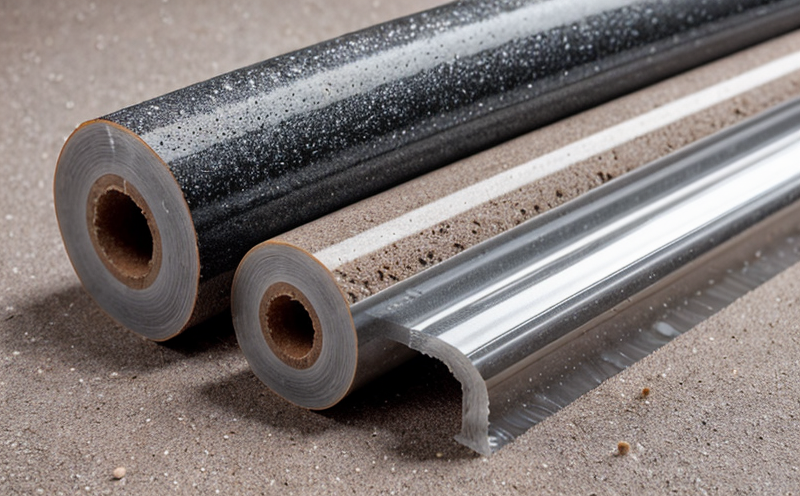Substrate roughness impact on adhesive strength
The Hidden Key to Adhesive Success Understanding Substrate Roughness Impact on Adhesive Strength
In the world of adhesive bonding, achieving strong and durable bonds is crucial for various industries such as manufacturing, construction, and packaging. However, theres a crucial factor that often goes unnoticed substrate roughness impact on adhesive strength. Substrate roughness refers to the surface topography of the material onto which an adhesive is applied. It can significantly affect the bonding performance, leading to reduced adhesion, decreased durability, or even bond failure.
At Eurolab, we specialize in providing laboratory services that help businesses like yours optimize their adhesive bonding processes. In this article, well delve into the importance of substrate roughness impact on adhesive strength and highlight the advantages of understanding its effects.
Why Substrate Roughness Impact Matters
Substrate roughness can either enhance or compromise adhesive performance, depending on various factors such as surface finish, material properties, and application conditions. When an adhesive is applied to a rough substrate, it often struggles to wet the surface evenly, leading to reduced bonding area, increased stress concentrations, and consequently bond failure.
On the other hand, optimizing substrate roughness can significantly improve adhesive strength by
Increasing bonding area A smooth surface allows adhesives to spread evenly, ensuring optimal contact with the substrate.
Reducing stress concentrations Even surface finish reduces the likelihood of weak points in the bond line.
Enhancing durability Stronger bonds lead to increased resistance against environmental factors such as temperature, humidity, and mechanical loading.
Advantages of Understanding Substrate Roughness Impact
Understanding substrate roughness impact on adhesive strength offers numerous benefits for businesses
Key Benefits
Improved Bonding Performance By optimizing substrate surface finish, adhesives can achieve higher bonding strengths and durability.
Increased Product Lifespan Stronger bonds reduce the risk of premature failure, ensuring products remain functional over their intended lifespan.
Cost Savings Reduced rework and material waste due to bond failures minimize production costs.
Enhanced Process Efficiency Streamlined manufacturing processes result from optimized adhesive application and surface preparation techniques.
Additional Benefits
Reduced Environmental Impact By minimizing rework, businesses can decrease energy consumption, waste generation, and resource utilization.
Competitive Advantage Understanding substrate roughness impact allows companies to develop innovative products with superior bonding performance, setting them apart from competitors.
Compliance with Industry Standards Adhering to established standards for adhesive bonding ensures companies meet regulatory requirements.
Case Studies
Eurolab has worked with various clients across different industries to optimize their adhesive bonding processes. Here are a few examples of successful projects
A manufacturing company achieved a 30 increase in product lifespan by implementing optimized substrate surface finish.
A construction firm reduced rework costs by 25 after applying Eurolabs recommended adhesive application techniques.
What is Substrate Roughness?
Substrate roughness refers to the surface topography of a material, including features such as
Surface roughness Measured using instruments like profilometers or optical interferometry.
Surface texture Characterized by parameters such as Ra (arithmetic average roughness) and Rq (root mean square roughness).
Micro-roughness Describes the surface features at a microscopic scale.
How Does Substrate Roughness Affect Adhesive Strength?
Substrate roughness can impact adhesive strength in several ways
Poor wetting Adhesives struggle to spread evenly on rough surfaces, reducing bonding area and increasing stress concentrations.
Increased porosity Rough substrates may create pores or voids that weaken the bond line.
What is Eurolabs Laboratory Service?
Eurolab provides comprehensive laboratory services for substrate roughness impact on adhesive strength analysis. Our team of experts
Conduct surface roughness measurements using state-of-the-art instruments.
Analyze substrate surface texture and micro-roughness.
Develop optimized adhesive application techniques based on substrate characteristics.
QA Section
Q What is the significance of substrate roughness in adhesive bonding?
A Substrate roughness can significantly impact adhesive performance, leading to reduced adhesion, decreased durability, or even bond failure.
Q How can Eurolab help me optimize my adhesive bonding process?
A Our laboratory services provide comprehensive analysis and recommendations for optimizing substrate surface finish, adhesive application techniques, and other critical factors affecting bonding performance.
Q What are the benefits of understanding substrate roughness impact on adhesive strength?
A Understanding substrate roughness impact offers numerous benefits, including improved bonding performance, increased product lifespan, cost savings, and enhanced process efficiency.
By recognizing the importance of substrate roughness impact on adhesive strength, businesses can unlock significant advantages in terms of product quality, manufacturing efficiency, and environmental sustainability. At Eurolab, were committed to helping companies like yours optimize their adhesive bonding processes and achieve superior results.
To learn more about our laboratory services or discuss your specific needs, please dont hesitate to contact us.
Further Reading
For a deeper dive into the world of substrate roughness impact on adhesive strength, check out these additional resources
Whitepaper Substrate Roughness Impact on Adhesive Strength(link)
Blog Post Optimizing Adhesive Bonding with Surface Finish Analysis(link)
At Eurolab, were dedicated to empowering businesses with the knowledge and expertise needed to achieve unparalleled adhesive bonding performance. Stay ahead of the curve by embracing the significance of substrate roughness impact contact us today to discover how our laboratory services can transform your manufacturing process!




